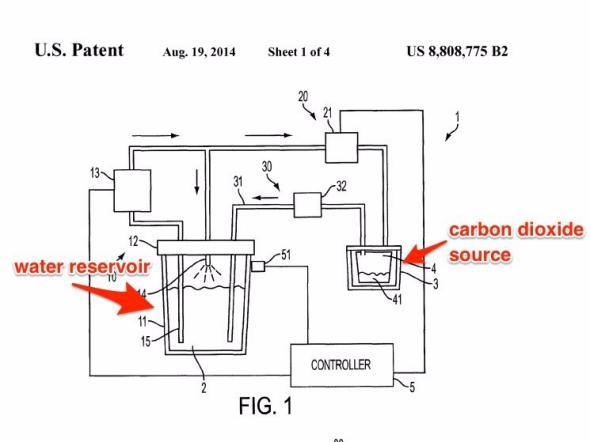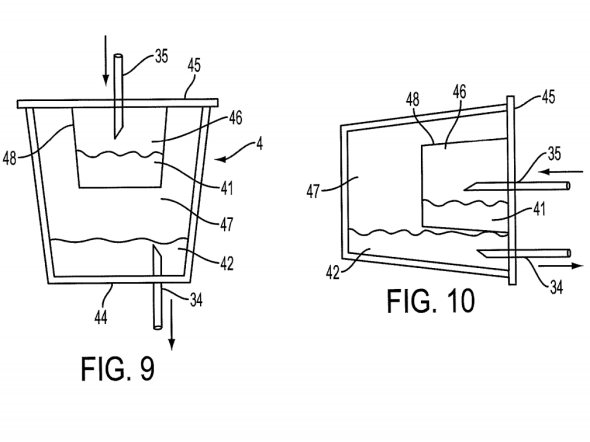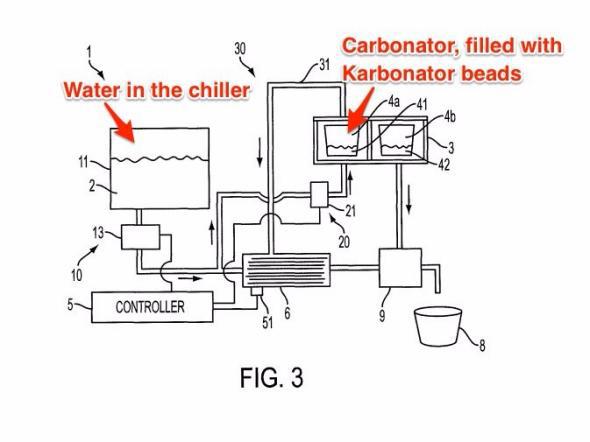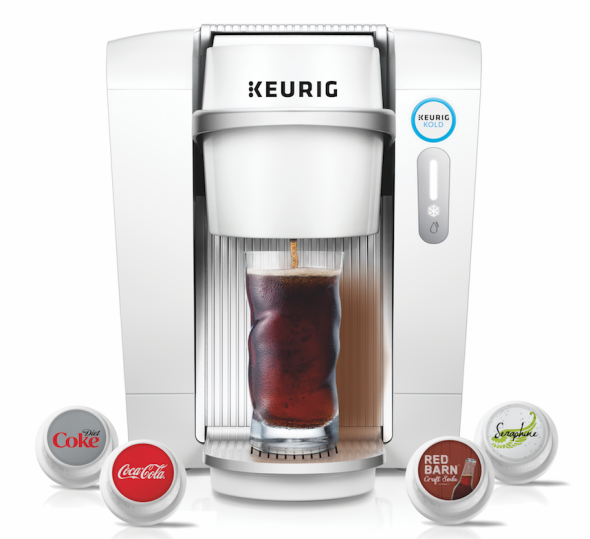This post originally appeared on Business Insider.
Keurig Green Mountain’s next big thing is its cold-drink maker, as the recently-acquired company attempts a financial comeback. Called the Kold, it is going to be rolled out nationally next year. Right now, it is available on the company’s website and in a few retailers.
On Monday, Keurig announced it is being acquired by JAB Group—which also has a majority stake in coffee-centric companies such as Peet’s Coffee & Tea, Caribou Coffee Company, and Jacobs Douwe Egberts—for $92 per share.
The deal comes after a year in which shares of Keurig lost about 60 percent of their value, with an all-time split-adjusted high of around $150 per share last November.
Keurig faces a saturated market for its hot drink brewing machines, which means a lot is riding on the Kold—which can deliver a carbonated, chilled beverage in 90 seconds without using a CO2 canister.
There’s a lot of technology—and money—behind this. The company filed more than 50 patents, and has another 100 applications pending, over the course of five years as it developed the system. Keurig invested about $100 million in the device in fiscal 2015, and said in September it planned to spend a similar amount in 2016.
However, the roll out has so far been limited and often negative. Critics of the Kold have been quick to point out some big flaws in the device: It’s expensive, large, needs to get warmed up and isn’t more convenient than popping open a soda, according to some complaints on Keurig’s website and Facebook page.
But a closer look at how the device works also reveals a few hints to how Keurig might be able to do to address some of these issues.

Keurig
While much of the press surrounding Keurig Kold has focused on the machine’s carbonation features, the process starts with chilling. “There are a lot of ways to make something hot quickly, but there are few options to make something cold quickly,” Keurig spokesperson Suzanne DuLong told Business Insider.
As soon as users insert a pod with the flavor of soda they are after, and start the machine, water is drawn into a chiller from the external water tank. The chilling process begins as an impeller spins, cooling the water.
If the water isn’t cold enough, it will not absorb carbonation as well. Plus, the changing temperature of the water is responsible for setting off the chain of events that follows in the next 90 seconds.

U.S. Patent and Trademark Department
As the chiller does its job, a small amount of water is brought to the cartridge chamber, where the flavor pod is located.
The drawings in this August, 2014 patent by Keurig’s Thomas Novak, Ross Packard, Peter Peterson and Shawn Gulla for a “Method and apparatus for cartridge-based carbonation of beverages” are not the exact schematics for the Keurig Kold machine. However, they do show the tech that underpins it, as water moves from one chamber to another.

Keurig
The carbonation comes from “beads” in the upper chamber.
The flavor pod is divided into the two chambers. One contains beads that are made with a blend of minerals—primarily aluminum silicate—with tiny porous spaces that hold carbon dioxide captive until they’re exposed to water. Keurig calls them “Karbonator” beads.
The second chamber contains the beverage syrup, which comes into play later.
Once the system registers the water in the chiller has reached the optimum temperature of approximately 37 degrees, the Keurig Kold releases the small amount of water into the top of the pod, wetting the beads and releasing the carbon dioxide.

U.S. Patent and Trademark Office
The released carbon dioxide then has to travel back into the chiller to carbonate the water.
(Again, patent illustrations are not exact replicas of the Kold — this one provides an illustration of the Keurig-patented process through which “liquid is carbonated in a single pass through a carbonator,” with arrows showing the path water takes to become carbonated.)
At this point, the system’s mixer expels the pod’s syrup just as the carbonated water is being released, producing two separate streams that combine to make the beverage. The timing and volume are key, as they allow for the consistent blend of carbon dioxide, water, and syrup in the drink, without requiring mixing after the fact.
“We knew the machine needed the ability to perfectly dose and mix the beverage so that we could deliver a consistent beverage time after time,” DuLong told Business Insider. “We knew from experience with the hot system, that the only way to attract partners—people whose reputations in their beverage brand—was to guarantee that consistency time and time again.”
All of this occurs in about 90 seconds. Then, the pod—including the beads—are discarded, and the user is left with a 39 degree glass of soda, seltzer, or cocktail mixer.
What’s next?

GE Appliances
Some of the harshest complaints from Kold users seem to be a result of this whole process. They say the Kold is too big, takes a long time to cool down before its ready to use, and that it can be very noisy.
But Keurig recently partnered up with appliance makers like GE Appliances to include a version of its hot brewer inside their fridge. Doing the same with the Kold might solve a lot of the problems above.
“We know that the first product we put out in the new technology is never going to be perfect,” Keurig CEO Brian Kelley said of the Kold in the company’s fourth quarter earnings call. “We’re going to learn and we’re going to improve.”
See also: Two Acquisitions Show Facebook’s Growing Investment in Augmented Reality
